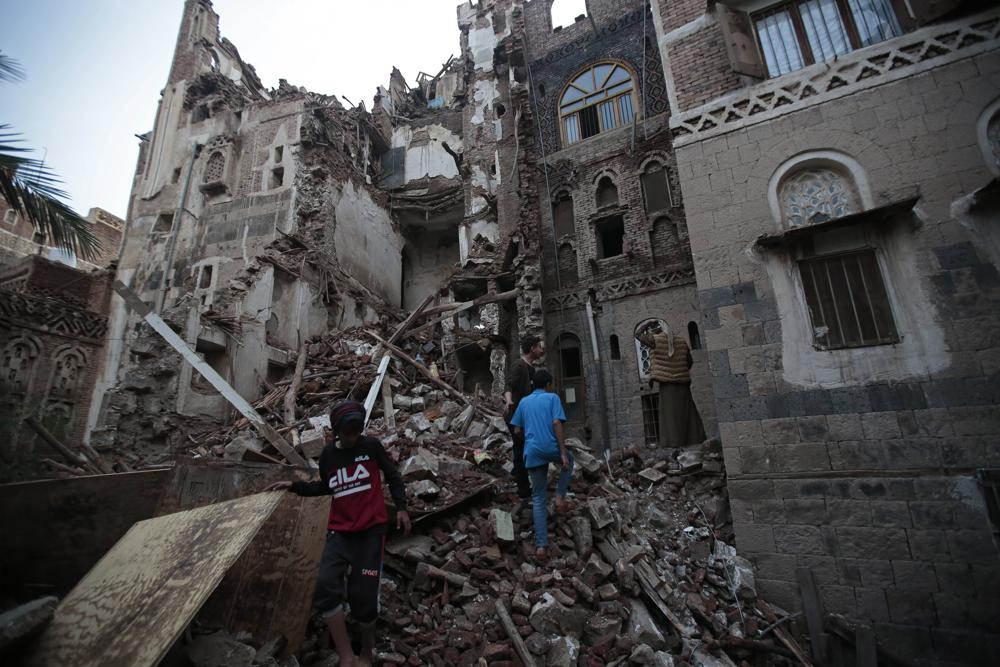Torrential rains across southwestern Yemen and the country’s capital of Sanaa have triggered flashfloods and collapsed homes, killing at least 38 people over the past two days, officials said Thursday.
Scores of homes in Sanaa and the provinces of Dhamar and Ibb have completely collapsed or have been significantly damaged, said the officials, who spoke on condition of anonymity because they were not authorized to talk to the media.
The areas are controlled by Yemen’s Houthi rebels, who are at war with forces loyal to the country’s internationally recognized government, backed by a Saudi-led coalition.
Yemen’s annual rainy season usually starts in May and lasts until August but this year, the Arab world’s most impoverished country has seen heavier-than-usual rains accompanied by thunderstorms.
Meanwhile, UNESCO on Thursday voiced concern over the impact of the rainfall on the the Old City of Sanaa, a World Heritage site, where rebels said the previous day that 10 of the city’s historic houses have fully collapsed and about 80 have been damaged by the rains.
The architecture in the Old City is unique, with red brick facades adorned with white gypsum molding in ornate patterns, drawings comparisons to gingerbread houses — a style that has come to symbolize Yemen’s capital. Many of the houses are still private homes and some are more than 500 years old.
In an email sent to The Associated Press, the U.N. agency said it was monitoring closely the situation in Sanaa, as well as in the town of Zabid, a former capital of Yemen, and the old walled city of Shibam. Along with the European Union, the U.N. agency has restored more than 200 historic buildings in the heart of Sanaa over the past four years but more remains to be done, it said.
In 2020, floods set off by heavy rains similarly damaged many historical houses in Sanaa’s Old City and undermined conservation efforts. The preservation efforts have also been undermined in recent years by the ongoing civil war, UNESCO added.
“The magnitude of the needs on the ground requires further prioritization of interventions in inhabited historic houses of outstanding architectural value, which are facing substantial damages,” UNESCO said.
Yemen’s conflict erupted in 2014, when the Iran-backed Houthis descended from their northern enclave and took over Sanaa, forcing the government to flee to the south and later into exile in Saudi Arabia. The Saudi-led coalition entered the war in early 2015 to try to restore the government to power.
Since then, the conflict has turned into a proxy war between regional foes Saudi Arabia and Iran and spawned one of the world’s worst humanitarian crisis.
(AP)











